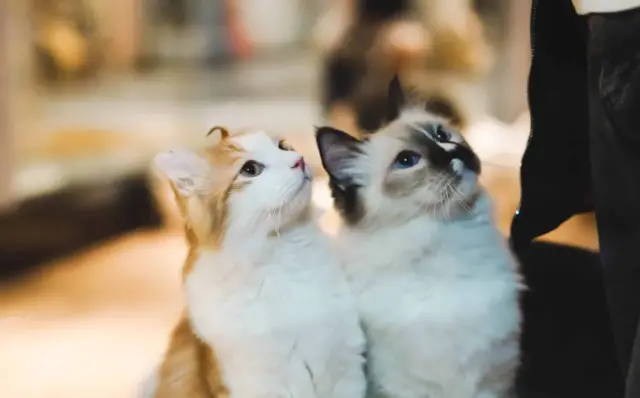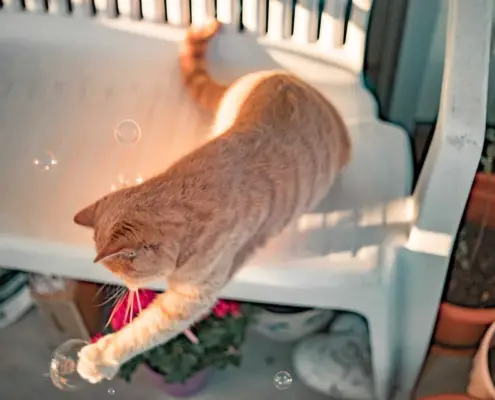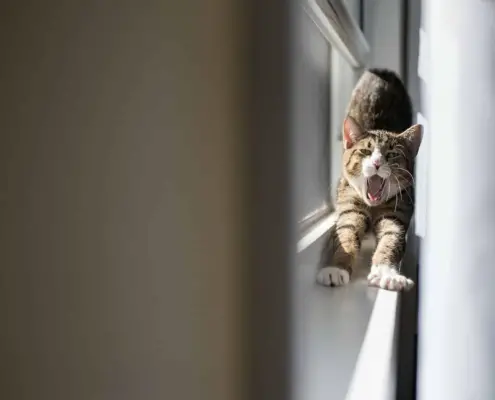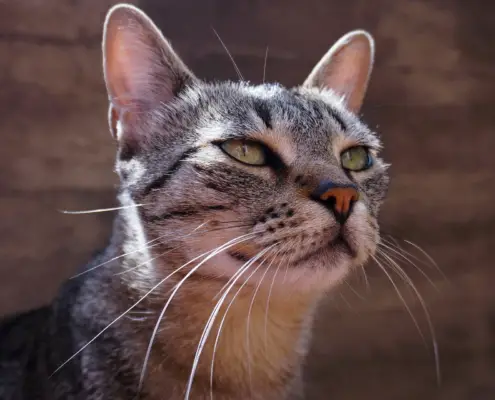
Cats are known for their extraordinary visual abilities that have been the subject of fascination for centuries. Some ancient cultures even worshipped cats, attributing supernatural powers to their eyes. While we may not believe in the supernatural, it is clear that cats have an incredible visual system that allows them to see in the dark and hunt with precision. This article will explore the mystery behind a cat’s superior vision and answer the question, do cats see better during the day or at night?
Understanding a Cat’s Visual System
A cat’s visual system is much more complex than that of humans. They have large eyes, which are adapted to capture as much light as possible, and a high concentration of rod cells in their retina. Rod cells are responsible for detecting light and motion, making them vital for hunting in low light conditions. Cats also have a reflective layer behind their retina, called the tapetum lucidum, which bounces light back into the retina, allowing for even better vision in low light conditions.
While cats have excellent night vision, their daytime vision is not as strong as humans. They have fewer cone cells in their retina, which are responsible for color vision and visual acuity. This means that cats see the world in shades of blue and green, and their ability to distinguish between different colors is limited.
The Difference Between Human and Feline Vision
Humans have a wider range of color vision than cats, as we have three types of cone cells in our retina. This allows us to see colors across the visible spectrum, from red to violet. Our visual acuity is also better than cats, as we have a higher concentration of cone cells in the fovea, the central part of our retina responsible for sharp, detailed vision.
However, cats have a wider field of view than humans, allowing them to see more of their surroundings without moving their head. They also have better peripheral vision, which is useful for detecting prey or potential threats from the side. Cats can also see better in low light conditions than humans, thanks to their large pupils, sensitive rod cells, and reflective tapetum lucidum.
Do Cats See Better During the Day or at Night?
Cats are crepuscular animals, meaning they are most active during dawn and dusk, when the lighting conditions are low. However, they are also active during the day and at night, depending on their hunting preferences and environment.
While cats have better night vision than humans, they can still see during the day. However, their daytime vision is not as strong as humans, and they may have difficulty distinguishing between certain colors or seeing fine details. Cats also prefer to rest during the hottest part of the day, when the lighting conditions are brightest.
Overall, cats are adapted to see well in a range of lighting conditions, from bright sunlight to complete darkness. Their visual system is finely tuned for hunting, allowing them to detect prey with precision and speed.
The Advantages of a Cat’s Night Vision
Cats have several advantages when it comes to night vision. Their large pupils allow more light into their eyes, while their reflective tapetum lucidum bounces light back into their retina, increasing their sensitivity to low light conditions. They also have a higher concentration of rod cells in their retina, which are responsible for detecting motion and light.
These adaptations make cats excellent nocturnal hunters, capable of catching prey in near darkness. They can also detect movement from far away, allowing them to avoid potential threats and predators.
Cats also have a unique ability to adjust their vision to different lighting conditions. When moving from a bright environment to a dark one, the pupils of their eyes dilate to let in more light, while the reverse happens when moving from a dark environment to a bright one. This allows cats to see well in a wide range of lighting conditions, from bright sunlight to a moonless night.
The Benefits of a Cat’s Day Vision
While cats may not see as well as humans during the day, they still have several advantages when it comes to daytime vision. Their wide field of view and sharp peripheral vision make them excellent at detecting movement from any direction. They are also very sensitive to motion, allowing them to track fast-moving prey.
Cats also have an exceptional sense of depth perception, which is important for hunting. They can judge distances accurately, allowing them to pounce on their prey with precision. This ability is thanks to their binocular vision, which allows them to see with both eyes at once and create a 3D image of their surroundings.
How Cats Adapt to Different Lighting Conditions
Cats have several adaptations that allow them to see well in a range of lighting conditions. When moving from a bright environment to a dark one, the pupils of their eyes dilate to let in more light. This allows them to see better in low light conditions.
Cats also have a reflective layer behind their retina, called the tapetum lucidum, which bounces light back into the retina, increasing their sensitivity to low light conditions. This gives them excellent night vision, allowing them to see in near darkness.
When moving from a dark environment to a bright one, the pupils of their eyes constrict to reduce the amount of light entering their eyes. This prevents them from being overwhelmed by bright light and allows them to see well in bright sunlight.
The Role of a Cat’s Eyes in Hunting
Cats are born hunters, and their eyes play a crucial role in their hunting abilities. Their excellent night vision allows them to hunt in low light conditions, while their binocular vision and depth perception allow them to track and pounce on prey with precision.
Cats are also very sensitive to motion, allowing them to detect even the slightest movements of their prey. Their wide field of view and sharp peripheral vision make them excellent at detecting movement from any direction, while their exceptional sense of depth perception allows them to judge distances accurately.
Overall, a cat’s eyes are perfectly adapted for hunting, allowing them to see in a range of lighting conditions and detect prey with precision and speed.
Factors That Affect a Cat’s Vision
Several factors can affect a cat’s vision, including age, disease, and injury. As cats age, their visual acuity may decline, making it harder for them to see fine details or distinguish between colors. They may also develop cataracts, a clouding of the lens that can affect their vision.
Diseases such as feline immunodeficiency virus (FIV) and feline leukemia virus (FeLV) can also affect a cat’s vision. Both diseases can cause retinal damage, leading to vision loss or blindness.
Injuries to the eye can also affect a cat’s vision. Scratches or punctures to the eye can cause corneal ulcers or infections, leading to vision loss. In some cases, the eye may need to be removed to prevent further damage or infection.
A Cat’s Extraordinary Visual Abilities
Cats have an incredible visual system that allows them to see in a range of lighting conditions and hunt with precision. Their adaptations for night vision, including large pupils, sensitive rod cells, and a reflective tapetum lucidum, make them excellent nocturnal hunters.
While their daytime vision may not be as strong as humans, cats have several advantages, including a wide field of view, sharp peripheral vision, and excellent depth perception. Their eyes play a crucial role in their hunting abilities, allowing them to detect prey with precision and speed.
Factors such as age, disease, and injury can affect a cat’s vision, but overall, cats have an extraordinary visual system that has evolved over millions of years for the purpose of hunting and survival.
If you enjoyed my article, I would appreciate you sharing it with your network.

Sima Ndlebe
Sima writes for CatBuzz. He is interested in Cats, Health and Fitness, and Entrepreneurship.
Published: 13 November 2023



